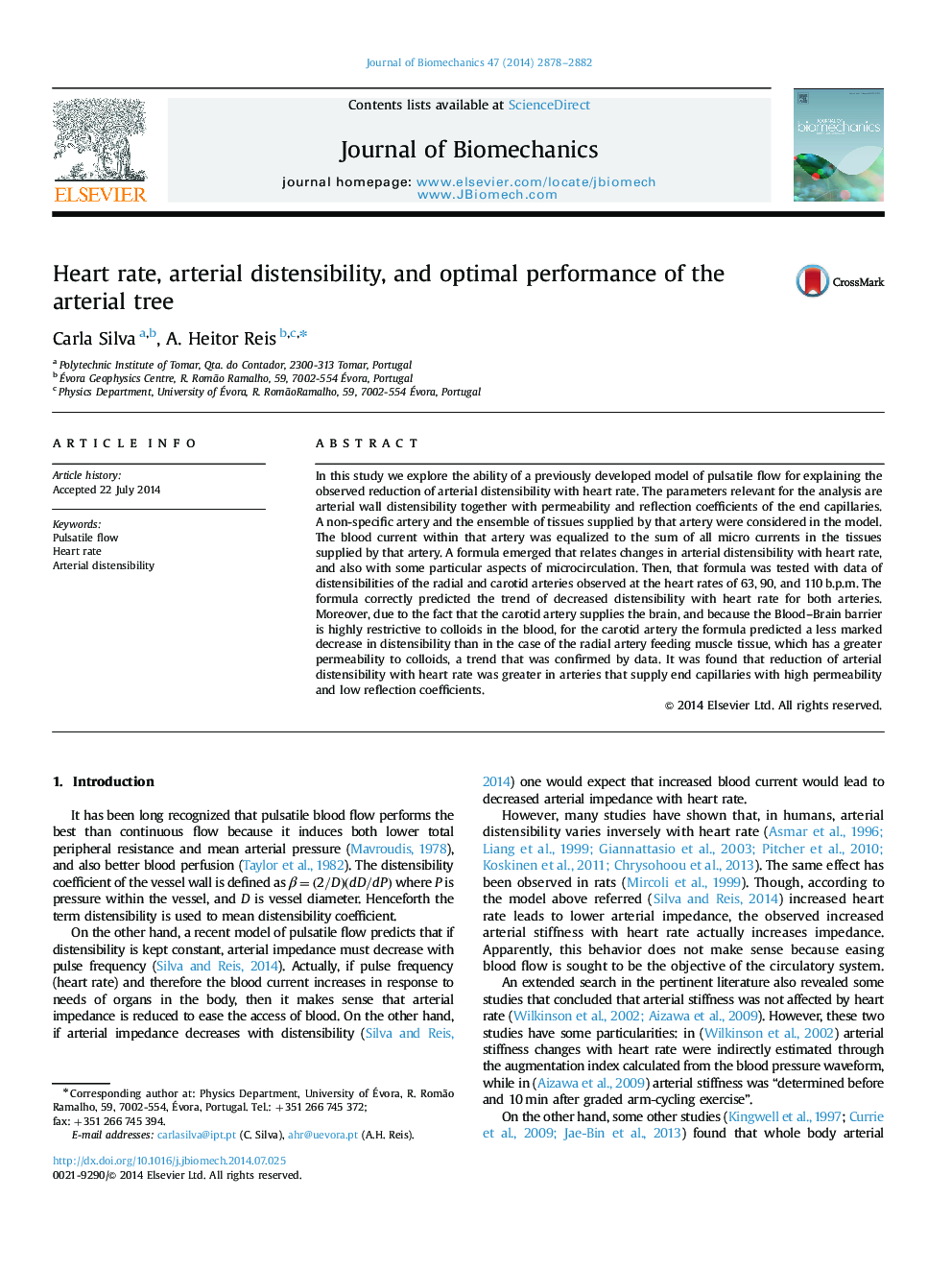| Article ID | Journal | Published Year | Pages | File Type |
|---|---|---|---|---|
| 10432097 | Journal of Biomechanics | 2014 | 5 Pages |
Abstract
In this study we explore the ability of a previously developed model of pulsatile flow for explaining the observed reduction of arterial distensibility with heart rate. The parameters relevant for the analysis are arterial wall distensibility together with permeability and reflection coefficients of the end capillaries. A non-specific artery and the ensemble of tissues supplied by that artery were considered in the model. The blood current within that artery was equalized to the sum of all micro currents in the tissues supplied by that artery. A formula emerged that relates changes in arterial distensibility with heart rate, and also with some particular aspects of microcirculation. Then, that formula was tested with data of distensibilities of the radial and carotid arteries observed at the heart rates of 63, 90, and 110Â b.p.m. The formula correctly predicted the trend of decreased distensibility with heart rate for both arteries. Moreover, due to the fact that the carotid artery supplies the brain, and because the Blood-Brain barrier is highly restrictive to colloids in the blood, for the carotid artery the formula predicted a less marked decrease in distensibility than in the case of the radial artery feeding muscle tissue, which has a greater permeability to colloids, a trend that was confirmed by data. It was found that reduction of arterial distensibility with heart rate was greater in arteries that supply end capillaries with high permeability and low reflection coefficients.
Related Topics
Physical Sciences and Engineering
Engineering
Biomedical Engineering
Authors
Carla Silva, A. Heitor Reis,
